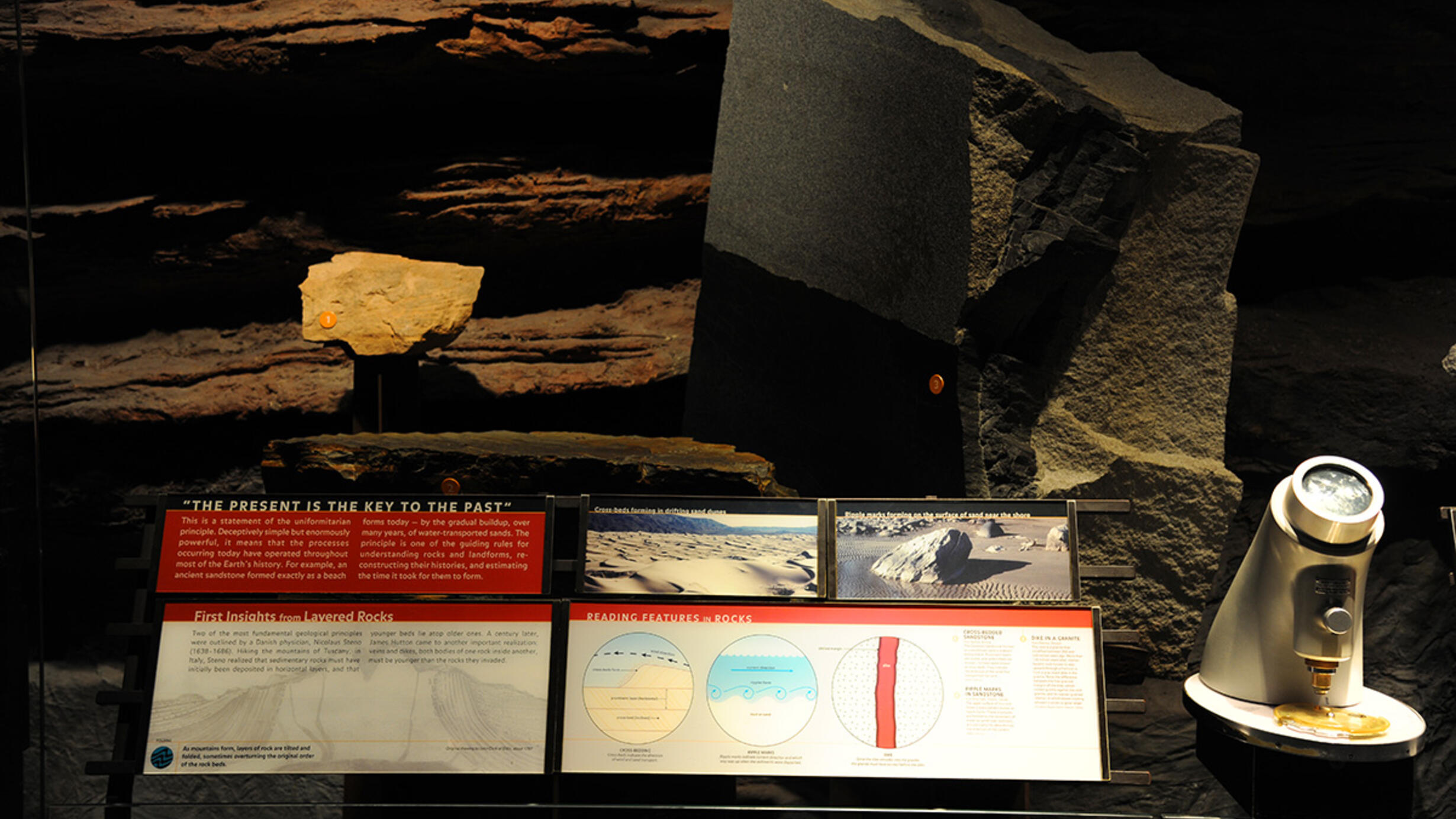The Present Is the Key to the Past
Part of Hall of Planet Earth.

This is a statement of the uniformitarian principle. Deceptively simple but enormously powerful, it means that the processes occurring today have operated throughout most of the Earth’s history. For example, an ancient sandstone formed exactly as a beach forms today—by the gradual buildup, over many years, of water-transported sands. The principle is one of the guiding rules for understanding rocks and landforms, reconstructing their histories, and estimating the time it took for them to form.
First Insights From Layered Rocks
Two of the most fundamental geological principles were outlined by a Danish physician, Nicolaus Steno (1638-1686). Hiking the mountains of Tuscany, in Italy, Steno realized that sedimentary rocks must have initially been deposited in horizontal layers, and that younger beds lie atop older ones. A century later, James Hutton came to another important realization: veins and dikes, both bodies of one rock inside another, must be younger than the rocks they invaded.
In This Section

Cross-Bedded Sandstone
The Coconino Sandstone formed as a windblow sand in a desert environment. Prominent layers are visible, and within them are thinner, inclined layers known as cross-beds. They indicate the direction of the wind that transported the sand.

Dike in a Granite
This rock is a granite that solidified between 350 and 320 million years ago. More than 120 million years later, molten basaltic rock forced its way upward through a fracture to form a gray-black dike in the granite. Note the difference between the fine-grained margins of the dike, which cooled quickly against the cold granite, and its coarser-grained interior, in which slower cooling allowed crystals to grow larger.

Ripple Marks in Sandstone
The upper surface of this rock shows a wavy pattern known as ripple marks. These structures are formed by the movement of water (or wind) over sediment, and are useful for determining the direction of the current.